U5: Lazarus - Post Mortem Interview
Many cRPG players see Ultima IV through to VII as a revolutionary period. The work to bring Ultima V to life with a modern engine - Dungeon Siege of all things - must surely be one of the most ambitious mod projects ever undertaken and successfully completed. If you haven't played U5: Lazarus, you owe it to yourself to experience this amazing work that really does succeed in recreating the atmosphere and soul of Ultima. Jesse Rink interviewed project lead Ian "Tiberius" Frazier to provide this in-depth retrospective on the project.
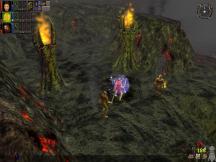
RPGWatch: Giving up five years of your life to create something you will never receive a single penny for must have at times become frustrating and left you questioning whether it was worth it. Now that the end result is finally here, and hearing the outpouring of praise from countless Lazarus players, was it worth it? And, would you ever work on another volunteer project in the future?
Team Lazarus: Yeah, I’d say it was worth it, at least for me, because it succeeded in all the goals that we set for it. Our first goal was to create something true to the “Ultima spirit” which the fans would love, and I think the reviews and fan comments indicate that we did that. The second goal was to gain experience in all the inner workings of game development—every member of our team got that, and we learned a lot. And a third goal for many of us was to use this experience to find work in the game industry—a goal that I’m happy to report was accomplished by myself and a few other members of the team over the years.
Would I do another volunteer project like this in the future, though? No, probably not. Five years of your free time is an enormous commitment, and at this point in my career, I’m ready to do full-fledged independent games (original IP, sold for a small profit) as my side projects rather than freeware mods.
RPGWatch: During the early stages of the Lazarus project, did the team anticipate this to be a five year project, if not, what timeframe did the team anticipate from start to finish?
Team Lazarus: No, certainly not! Our original estimate was only 2 years for production. That completely fell apart after Dungeon Siege got delayed for 6 months and then the toolkit didn’t get released immediately after launch. After that, new problems and poor task time estimates continued to plague us for years. It wasn’t until the last year and a half or so of the project that we finally had enough experience to really know how to estimate tasks, and keep production running in full swing around the clock. A lot of painful lessons had to be learned to get us to that point, unfortunately.
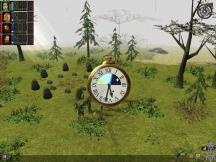
RPGWatch: Were game engines besides Dungeon Siege initially considered?
Team Lazarus: Yes, actually. We looked at the Ultima VII engine, Arcanum, Neverwinter Nights, and Morrowind, in addition to Dungeon Siege, before finally settling on DS as our engine of choice. While the other options all had a lot of strengths to offer, Dungeon Siege was simply the most customizable of the bunch by far—if you want to do a true total conversion, which alters even the most core mechanics of the game, Dungeon Siege is the engine of choice for you. If you want to do something smaller and less ambitious, I would highly recommend NWN or Morrowind (or more recently, Oblivion), which aren’t quite as flexible but are MUCH less painful to work with.
RPGWatch: Can you explain how Lazarus evolved from someone's idea to the beginnings of a game project?
Team Lazarus: The initial spark of an idea morphed into a series of small documents outlining the basic design goals for the game, at which point I started posting on various Ultima-related message boards and newsgroups requesting help with the project, in the form of artists, musicians, writers, programmers, etc. After getting the early skeleton crew on board with the idea, more detailed documents outlining the game were drafted, a website was created to make it easier to show off the project and gain new team members, and eventually the first in-game areas were mapped and built in the Siege Editor.
RPGWatch: How was the original design team for Lazarus put together? Did some team members already know each other prior to forming Team Lazarus, if so, how?
Team Lazarus: The original team members mostly came from a now-defunct Ultima message board called Horizons Tavern, a forum that I had frequented for a few years, so I already “knew” (in the internet sense, anyway) a number of regulars there. After that first set of people came on board, the rest were mostly fellow students with me at Purdue University.
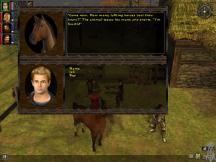
RPGWatch: The back story of Lazarus seems directly tied to Michael Hilborn's fan fiction tales of Blackthorn and Captain Johne. Can you elaborate on the influence of these works, and how this helped shape the character dialogues for the NPCs throughout the game?
Team Lazarus: They are indeed tied together. I’ve long considered The Tale of Captain Johne to be the greatest work of Ultima fan fiction (or any fan fiction, as far as I’m concerned), and thought it made a perfect backdrop for our game world. So I looked up the Email address of Mr. Hilborn (who, by sheer coincidence, had attended my university and graduated shortly before I enrolled) and told him about the project, requesting his services as a writer. Although he did write some dialogue himself, and also do a lot of miscellaneous programming work when needed, his main role was to write the detailed back story for the game (which became his second novella: The Fall of Lord Blackthorn) and work with our team of dialogue and book writers to integrate elements of his back story into the world as a whole.
RPGWatch: Was anyone ever fired from Team Lazarus? Names should remain anonymous, but what were the reasons involved?
Team Lazarus: Yes, quite a few people were fired from Team Lazarus over the course of five and a half years. In a few cases, it was due to a lack of quality in the team member’s work, but far more often it was simply a matter of poor communication and/or failing to meet deadlines. In the early days of the project, everything was very loose, but by the time we really got moving, it because obvious that in order to remain productive and on schedule, the importance of making deadlines and communicating with the project leader absolutely had to be impressed upon all members of the team. In some cases, this unfortunately required termination of consistently behind-schedule or non-responsive team members.
RPGWatch: How close did Lazarus ever come to officially going on hiatus or losing key team members?
Team Lazarus: Very close, on a number of occasions. Everyone’s interest (including mine) waxes and wanes on a project like this over the years, due to personal issues, career, and simple burnout. Especially when there was no end in sight, it was very easy to falter. There were three points we were extremely close to shutting down: the first back in 2002, was due to personal matters, and nearly killed the project through a 6-month period of basically nothing getting done. The latter two times were actually positive: one happening when we released our first alpha demo, and the other before launching the final game. The principle members of the projects got together and agreed that we were burned out and tired and wanted to be finished, but didn’t want to give up. So we gave the team as a whole an ultimatum stating that we’d just have to can the whole thing if a solid public demo wasn’t done by a certain date. The team pulled together beautifully, and we made it. A similar series of events preceded the final marathon before finishing the game as a whole. Both times were moderately terrifying, but it all worked out!
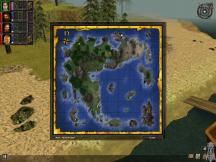
RPGWatch: Communication. Did any Team Lazarus members ever meet during this project? Were design discussions and communications ever done in person or via phone, or was electronic communications the only means used?
Team Lazarus: The majority of team communication took place over instant messengers like AIM and ICQ, and (later, after we were more established) a private message board. Phone calls did happen, but were rare. After the project had been running for a while, a fair number of team members were fellow students with me at Purdue University, so at that point we started meeting in person from time to time.
RPGWatch: What were some of the landmarks and milestones of development early on in regards to coding for gameplay itself?
Team Lazarus: Early on, all milestones had to do with infrastructure: setting up a website, completing all necessary design documentation and maps, etc., and Chris “Supercow” Frolik’s work developing the LDE (Lazarus Dialogue Editor), our proprietary software for writing complex branching dialogue scripts, which made our amazing NPCs possible.
RPGWatch: Were there features that Team Lazarus initially planned to include in the game that had to be axed due to time constraints or coding complexities? Things such as rafts, the flying carpet, or horses? What areas of the game mechanics proved to be the most difficult to implement?
Team Lazarus: The most obvious are those you mention: skiffs, flying carpet, and horses. We had also originally planned for being able to use the cannon when on board the ship. Other things which were cut included a light-draining effect on the Shadowlords which would lower all ambient light wherever the Shadowlords were present, custom terrain nodes for Empath Abbey and Serpent’s Hold, and the vertical movement spells (which frankly made a lot more sense in the original U5 than they would have in Lazarus anyway). For the most part, we got everything into the game that we wanted, one way or another.
The hardest stuff to implement was teleportation and, perhaps hardest of all, the NPC scheduling system. Shad “Frilly Wumpus” Heath really worked wonders to make those work as you see them today.
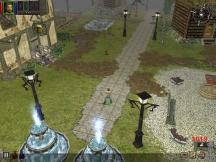
RPGWatch: What areas of Lazarus do you feel were the team's biggest accomplishments?
Team Lazarus: I love so much about Lazarus that it’s hard to narrow down, but I suppose the accomplishments I’m proudest of are our NPC dialogues, our portrait art, our music, and the sheer size of our world. The biggest thing of all, to me at least, is that I feel we’ve successfully imbued the game with the “Ultima spirit”—it genuinely feels like an old Ultima when you’re playing it, despite the modern graphics and tons of new content.
RPGWatch: Were there certain parts/features of the game that, during the project, were not planned to be included in the initial release, but somehow found a way to be added to the project and made it into the final release anyways?
Team Lazarus: Not exactly, but there are tons of things which were cut at one point, but then added back in at a later date when we figured out a way to achieve them with a lot fewer resources than were originally estimated. The grappling hook is a good example of this. For an even more dramatic example, there’s the scripted raid on Bordermarch, which didn’t work and therefore had to be cut just a few days before launching v1.0 of the game, but got re-added before the final v1.20 release of the game after lots of debugging.
RPGWatch: The path of joining the Oppression was considerably expanded in Lazarus in comparison to what the avatar was able to do in the original game. How did this come into play and was there any disagreement among team members to allow such a drastic change within the game?
Team Lazarus: Fortunately no, there was never any real argument on this matter. Trying to make the two sides of the conflict feel more real and more active in the world was one of the founding goals of the project, so any team member who disagreed with those goals wouldn’t have been too happy with us. It’s something we were fortunately all on the same page for.
RPGWatch: What was the general consensus on the world building aspect of towns/dungeons and how closely they should be modeled after the original U5 town/dungeon maps? Were there re-designs happening throughout the project for minor adjustments?
Team Lazarus: One of the first things we did in designing this game was to plot out exactly how many new NPCs we wanted to add, and a large part of that decision-making process was a semi-realistic look at what economic needs were not being met in certain parts of the kingdom. For instance, we wouldn’t place a tailor (a profession which didn’t exist in the original U5) in a town immediately next to another town with one, etc. After we’d worked out what new NPCs and shops we wanted, and after we’d established a scale for the entire world (i.e. how long we wanted it to talk to walk from point A to point B in real time), it was just a matter of fitting all the necessary shops and enough houses to hold all the NPCs in a realistic manner, into a given chunk of land. That, combined with trying to hold onto some aspects of the original town layouts, and finally simple aesthetics, resulted in the Lazarus map as you see it today.
RPGWatch: Mini dungeons. Players have frequently expressed their affection for the extra hidden places to explore that were not previously in U5. Can you elaborate on how mini dungeons were brought into the project?
Team Lazarus: There’s not much to say here. With the exception of the ruins of Shadowguard, which were planned since the earliest days of the project, the mini-dungeons were simply added by Lead Worldbuilder Scott “Claymore” Tengelin whenever he came across an area of the world that seemed too boring. He and I put together a long list of potential “points of interest” to scatter around the map wherever they were needed (Orc forts, Lich crypts, mini-dungeons, etc.) and then he made the magic happen and placed them whenever he reached a dull spot, or received feedback from playtesting that a specific area was dull. In the end, I’d like to think that our world consistently gives the player a good incentive to explore.
RPGWatch: Can you provide any more insight on the music within Lazarus? How were the composers selected, did you actively seek out any musicians or did they come to you? Did several scores get cut/rewritten along the way?
Team Lazarus: Our first composer, James “Terilem” Dangerfield, joined the team early on as a portrait artist (he did the Avatar portraits and all the joinable party members’ portraits) and later switched to music. He and Jared “Salanthalas” Ellsworth wrote the lion’s share of our soundtrack—Jared was someone I found online via his website (he had created some Ultima-inspired music that I really liked, among other things) and I requested his services for our project. Finally, Chris “Silverstorm” Many came aboard our project fairly late, adding his own professional touch and creating some of the key pieces for the game, such as Blackthorn’s March and Truth, the Lycaeum theme.
A tremendous amount of the music for Lazarus was reviewed and edited, scrapped completely due to a lack of cohesion with the rest of the soundtrack, or re-recorded at some point (due to the availability of newer and better audio hardware). I’m tremendously happy with the end result.
RPGWatch: Can you divulge any top-secret easter egg information?
Team Lazarus: I suppose I can give you one… As most Ultima veterans are aware, it was possible to kill Lord British (a character based on Richard Garriott, creator of the series) via some secret means, but he was otherwise invincible. The only exception was U5, since he spends the entire game trapped in a mirror. In Lazarus, our team decided to take a certain character in Skara Brae, who is based on the Lazarus project leader (i.e. me) and make him invincible but with a single secret weakness, just as with LB in the old days. So yes, although that character in Skara Brae appears to be unkillable, there IS in fact a way to end his life. To my knowledge, no one has yet managed it. I’ll give you a hint: his weakness is certainly my greatest weakness in real life, and is the weakness of a great many other men as well.
RPGWatch: Have you had any contact with Richard Garriott since the official release and do you have any idea whether or not he's played the game?
Team Lazarus: Yes, and I’ve heard nothing but good things! He also enjoyed our old alpha demo, which I had the pleasure of demonstrating for him at NCsoft in Austin a few years ago. I’m told that he still keeps it on his laptop to play while traveling from time to time.
RPGWatch: Unexpected surprises. Every project has their share of unplanned circumstances and surprises. Can you elaborate on one unexpected surprise that came up during the course of the project?
Team Lazarus: Hrm….there were an awful lot of surprises. Perhaps the greatest surprise for me was the sheer amount of people who actually downloaded the final game—by the last estimate, somewhere in the vicinity of 60,000 people downloaded Lazarus. For a 500 MB download, which mostly only appeals to veterans of a now-long-dead game series, which requires a 3-year-old game (Dungeon Siege) to even run, I was astounded by our success. It was certainly good to see!
RPGWatch: Certain aspects of the game were quite noticeably changed from the original game. One example of this was Captain Johne's underworld abode. In the original game he lived in a keep whereas in Lazarus, he dwelled in a meager tent. These changes add a lot more realism into the game, however, some purists may contend this, and other changes made, may change the game too much from its original concept. How difficult was it for the team to determine when changes such as this were needed vs. changing too much of the game itself?
Team Lazarus: For the most part, I don’t feel that we particularly changed anything that was intentional in the original game, but rather rebuilt the game “as they would have if they could have.” Take your Captain Johne example: in the original game, his abode (the wreck of his ship, The Ararat) looked like a keep when viewed on the underworld map, but when you entered into it, it looked like a ship (which is also backed up by Johne’s dialogue). Clearly this wasn’t supposed to be a boat hiding inside a small building, but was simply a case of not having enough graphics to convey a shipwreck on the main map.
In the end, most important decisions in terms of purism vs. new content were effectively determined by committee—there were certain members of our team who I considered to be the most rabid of purists, and by gauging their response to specific proposed design elements, I could generally determine what was safe to toy with and what wasn’t.
RPGWatch: How worried was the team throughout the entire 5 year project that EA would bring the hammer down and stop the project, suffering the same fate as other remakes like Ultima 4: Dawn of Virtue?
Team Lazarus: To my knowledge, no Ultima remake project has ever actually been shut down by EA. They simply get ignored (as we were, despite numerous attempts to contact EA). A couple of them have shut down upon realizing that EA would never grant them official permission (or in another case, upon realizing they could never profit from the game).
We were always somewhat worried about EA terminating the project, certainly—I’m not a great fan of the idea of getting sued (although admittedly I’m much too poor for them to get anything out of me, hah!). However, as it says on our website, we always continued in good faith that our entirely positive intentions toward EA/OSI and the Ultima name, and the quality of our project, would do nothing to harm EA’s IP and would only serve to attract a new generation of gamers to their own brand. Posts on our forums from fans going back to Ultima Online after playing Lazarus would seem to bear this out, and that EA never contacted us at all would seem to indicate that they are at peace with the project as well. It did them no harm and actually did do some good, we made zero profit off of their IP, and players got to enjoy a great game. Everybody wins.
RPGWatch: When 1.0 was initially released, were there plans at that time for a 1.1 and eventually a 1.2 release? Or were more bugs revealed after the initial release than expected?
Team Lazarus: Yes and no. When 1.0 was released, we were gasping exhausted across the finish line and collapsing on the other side. I know that I and a few other members of our team didn’t sleep for at least 40 straight hours. So at the time, despite knowing in the back of our minds that a patch would undoubtedly be needed, it was much more pleasant to imagine that it would not be necessary.
It was necessary, of course. Some of the problems which were found were things we already knew about, and a ton of new bugs were found (a somewhat surprising amount, given how much QA we did before launch). After having a couple days to rest after the initial launch, it was determined that the best course of action was to launch a quick stop-gap patch (v1.10) which would solve the most serious and pressing of bugs, without harming savegames, and then spend however much time was necessary to create a final catch-all patch (v1.20) which would effectively address everything we reasonably could, and let the project stand there.
RPGWatch: Since the 1.2 release of the game, there are very few bugs remaining at all. The few that do exist are almost all minor/trivial and none prove to be plot breaking. Did you ever imagine having a final product that was as stable as this considering retail games rarely, if ever, reach this level of perfection?
Team Lazarus: I’m very pleased with the final state of the game (v1.20), bug-wise. For a game of this complexity, and being built with someone else’s technology (Dungeon Siege), it’s amazing to me how solid it actually is. A huge amount of credit is due here to Gil “Gileathane” MacLean, who managed the tech support forums and did a wonderful job of tracking major issues and ensuring that they got addressed for the various patches. I’m pleased to report that he recently got a game industry job himself (IR Gurus Interactive), so I guess all that hard work paid off!
RPGWatch: How surprised was the team to find players creating their own modifications to the game and even resolving some minor bugs so quickly after the 1.20 release?
Team Lazarus: Very surprised. Pleasantly surprised. :) Although I must admit the concept of modding a mod still strikes me as somewhat funny, I’m thrilled that people are doing so!
RPGWatch: Any parting words you wish to share?
Team Lazarus: To anyone out there considering undertaking your own mod project: If you want to succeed, you must love and BELIEVE in your project! No matter how many people say it’ll never happen, and no matter how many other mods you see collapse around you, if you work hard, persevere, and focus on a project that you love and believe in, I guarantee you can make it happen. Our team loved this game and believed in its potential to be the best Ultima ever made, and although the road was extremely long and hard, we made it happen. My hat’s off to this wonderful team, and if you can pull off a project of your own, my hat’s off to you as well. Good luck!
Our thanks to Jesse Rink and Ian Frazier for their time producing this article and for the efforts of Team Lazarus in producing U5: Lazarus.
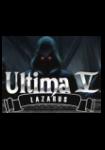
Information about
Ultima V Remake: LazarusDeveloper: Team Lazarus
SP/MP: Single-player
Setting: Fantasy
Genre: RPG
Combat: Real-time
Play-time: Over 60 hours
Voice-acting: Partially voiced
Regions & platforms
Internet
· Homepage
· Platform: PC
· Released: 2005-12-22
· Publisher: Team Lazarus
More information

